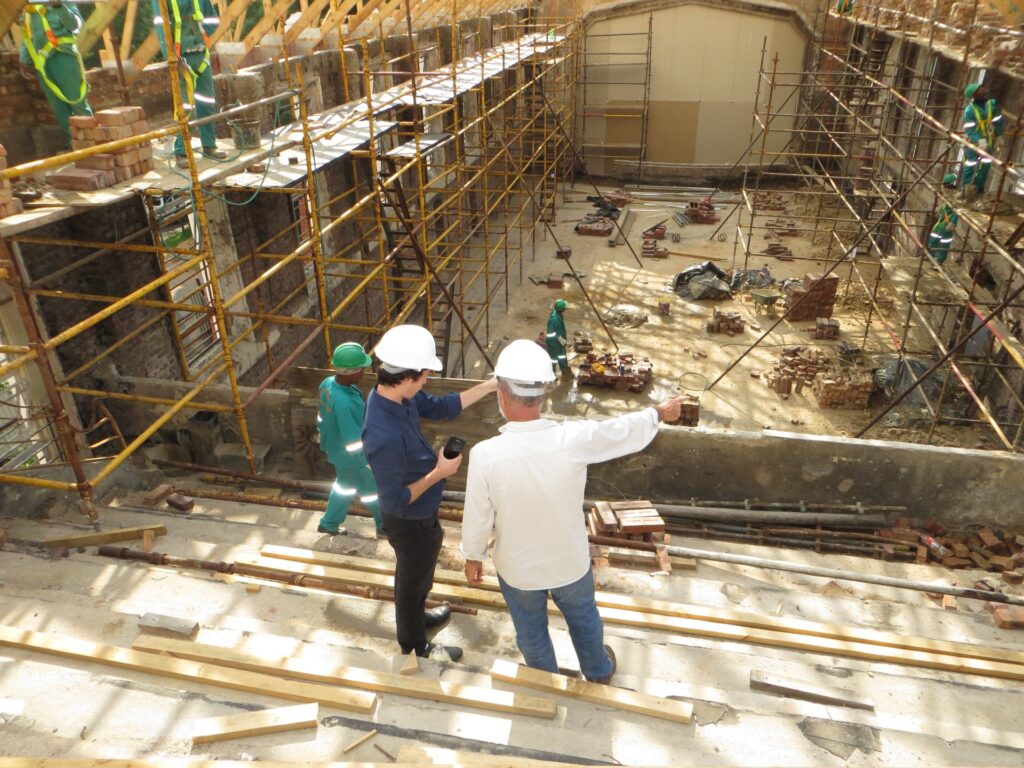
What is an RFI? Understanding a Construction Request for Information
When completing a construction project, there are going to be numerous administrative processes that you’ll be required to perform if you want the project to be finished successfully. One such process is an RFI, which is a request for information that can regularly occur in construction projects. In the majority of construction projects, the drawings, specifications, and overall agreement for the project might not include some of the smaller details for the project at hand. When these details are missing or unclear, an RFI document can be sent for the purpose of obtaining extra information on these details.
Keep in mind that an RFI can be sent by many different people who are involved within the construction process. For instance, a general contractor can send an RFI to an architect for additional information. It’s also possible for a subcontractor to send one of these documents to a general contractor. If ever you receive or send an RFI, it’s important that you keep a copy of this document in the event that a dispute arises at some point in the construction process. These documents can be stored within construction management software for easy access.
If you’re involved in construction, you might have also heard about an RFP, which is easy to confuse with an RFI. While an RFI is a request for information, an RFP is a request for proposal, which is a document that can be sent to request certain proposals from suppliers or contractors for different solutions pertaining to the construction projects. These proposals can involve using a different building process or changing to a new material for the property. An RFI is very similar to a construction submittal and can be sent by a subcontractor when they are creating a submittal that will eventually go forward for approval.
This article provides a detailed guide to requests for information and what these requests entail during construction projects.
Common Usage of an RFI in Construction

The main reason that requests for information are common in construction projects is because they can be used in any situation. When you or someone on the construction team requires additional information about an aspect of the construction project, they can fill out and submit an RFI. These requests can be made during every facet of the construction project, which extends to the design phase, the bidding phase, and the actual construction phase. In the majority of situations, RFIs are sent to clear up something about the design or to request information about material selection for the project.
An RFI can be used for the clarifications of:
- Design drawings
- Project specifications
- Project standards
- Contract
If you have a question about the contract and the terms within, an RFI can be sent to clarify any questions that you might have. The same is true if you’re unclear about an element of the design drawings for the building. Instead of powering ahead without seeking clarification, sending an RFI ensures that you don’t make costly mistakes that would only serve to delay completion of the project. Keep in mind that RFIs can adversely affect the costs in a construction project. Once an RFI is sent, delays will invariably occur while the RFI is being answered. The average delay time is just over nine days, which can cost you around $1,000 per RFI. However, RFIs are beneficial at keeping construction mistakes to a minimum, which can save a significant amount of money in the long run.
Setting RFI Standards

When RFIs are sent at any phase of the construction process, delays can occur that end up wasting both time and money. While there will always be a small delay when an RFI is sent, it’s possible to keep these delays to a minimum if you have the right management process in place. In order to get the entire construction company on board with the RFI, you need to spend time talking with them about the issues that come with avoiding this process. While it’s always possible to speak directly with a contractor or client when seeking clarification, a dispute could eventually be brought up by the contractor or client in question, which is why having an RFI to reference is important.
When an RFI is sent, it serves as formal documentation pertaining to the request, which means that any dispute that occurs in the future can be backed up by the RFI. If you want to streamline the RFI process, everyone in the construction company should be aware of the importance of this process. It’s also important that any RFI that you receive or is sent to another individual is logged, which will allow you to reference the document in the future.
What an RFI Should Contain

If you need to create an RFI during any facet of a construction project, it’s highly recommended that you follow a template, which ensures that you don’t leave out any critical information.
Items Included in an RFI
The primary items that should be included within an RFI extend to:
- The name of the project
- The date that the RFI is created
- A chronological number for the RFI
- Details of anyone who is set to be a recipient of a copy of the RFI
- The title or subject name of the RFI
- Details about the information that you’re requesting and why this request is being made
- The exact date that a response is needed by, which means that stating “ASAP” isn’t enough
- A drawing, detail, or specification number reference if necessary
- Name of the issuer of the RFI
- Pertinent details of your company
- A date of response, which is when the RFI is received by the recipients
Conclusion

Before you even begin work on a construction project, it’s absolutely essential that everyone in the construction company is aware of RFIs and their purpose in construction. No matter how small the request, it’s important that an RFI is sent, which will allow formal documentation to be recorded of the issue in the event that a dispute occurs at a later date. There are any number of reasons why disagreements may occur within the construction process. The most common reasons for disputes include:
- Site conditions that differ from what was mentioned in the initial construction bid
- Omissions or errors within the contract, which can be avoided by thoroughly vetting the contract before signing it
- Not properly administering the contract for the project at hand
- Not complying with contractual obligations
No matter the reason for the dispute, it’s important that you have documentation on hand to make sure that your side of the story is backed up with proof. There are also times when you may want to submit an RFP, which can help you to avoid disagreements during the construction process. As mentioned previously, a request for proposal is used for the purpose of requesting proposals from suppliers or contractors for alternative innovations or solutions that can be used. These proposals are necessary if a change must be made during the construction process to ensure that the alternative solution matches the standards of the previous one. For instance, a different material or building process may need to be used during construction.
While RFIs are exceedingly important during the construction process if you want to avoid disputes that only serve to delay completion of the building, the RFI process can also cause delays if the request for information isn’t promptly answered. If you’re in charge of managing certain aspects of the project, it’s important that you implement effective RFI management techniques.
Steps to Follow in the RFI Process
Some of the steps that you should follow if you want to successfully manage the RFI process include:
- Make sure that you create and submit an RFI as soon as you require additional information about the project at hand
- The RFI that you create should be limited to a single topic instead of including numerous questions, which ensures that the RFI can be answered promptly
- Allow for a certain amount of time for a response to be received about the RFI
- Always use a clear RFI template for your company, which will make it easier for you to obtain and record responses
- Add any documentation that supports the RFI, which extends to specifications, photos, or construction plans
- Close any RFI notice that was sent once you have received a satisfactory answer
- The entire team that you’re working with on the construction project should have easy access to RFIs
With these best practices at your disposal, you should be able to keep costs and delays to a minimum whenever RFIs are sent to your team or to other members of the construction project.

Jason Somers, President & Founder of Crest Real Estate
With over 15 years of professional experience in the Los Angeles luxury real estate market, Jason Somers has the background, judgement and track record to provide an unparalleled level of real estate services. His widespread knowledge helps clients identify and acquire income producing properties and value-ad development opportunities.
Learn more about Jason Somers or contact us.



